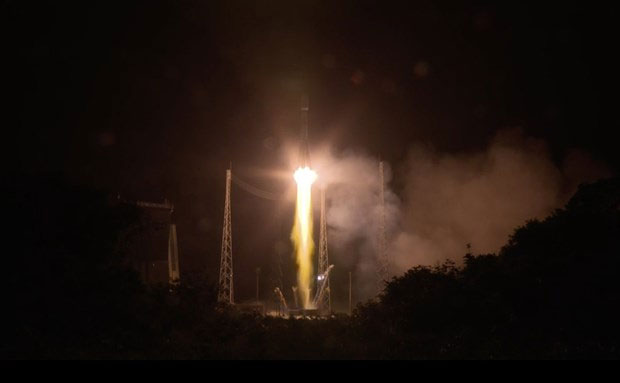Europe launches satellite search for extrasolar planets
CHEOPS satellite is like a telescope, designed to measure the thickness, structure and size of many planets outside the Solar System.
On December 18, a satellite looking for extrasolar planets called CHEOPS was launched into space after being delayed at the last minute a day earlier because the rocket had a technical problem.

Soyuz boosters carrying CHEOPS satellites leave the launch pad at the Guiana Space Center in Kourou.(Source: ESA).
According to a live footage made by Arianespace, the Soyuz rocket with CHEOPS satellite was launched at 8:54 am GMT (15:54 am Vietnam time) at an outdoor launch pad at the Space Center. Guiana in Kourou, French territory.
CHEOPS satellite is like a telescope, designed to measure the thickness, structure and size of many planets outside the solar system.
According to the European Space Agency (ESA), the CHEOPS satellite is also responsible for observing the bright stars known as planets in the universe. These are important tasks from which scientists can answer long-standing questions about the conditions necessary for extraterrestrial life, as well as find the origin of the Earth.
The CHEOPS satellite will operate in orbit about 700km from Earth.
Scientists estimate there are at least nearly 100 billion galaxies as well as stars in the universe. According to ESA Science Director Guenther Hasinger, the goal of the CHEOPS satellite is to draw a complete picture of planets outside the solar system.
- Europe will launch satellites to study planets
- NASA planet-like planet hunters will search in the vicinity
- NASA announces a map of 4,000 planets outside the Solar System
- Is there life on Venus?
- Space sunflowers help take photos of the stars more clearly
- Russia spoiled the satellite again
- Russia launches satellites for Europe
- Europe launches satellite observing the 7th Sentinel Earth
- 20 planets like Earth can survive life
- Discover 9 new planets
- Bolivia launches satellites in China
- Journey more than two decades to explore the outer planet
 'Fine laughs' - Scary and painful torture in ancient times
'Fine laughs' - Scary and painful torture in ancient times The sequence of numbers 142857 of the Egyptian pyramids is known as the strangest number in the world - Why?
The sequence of numbers 142857 of the Egyptian pyramids is known as the strangest number in the world - Why? History of the iron
History of the iron What is alum?
What is alum?